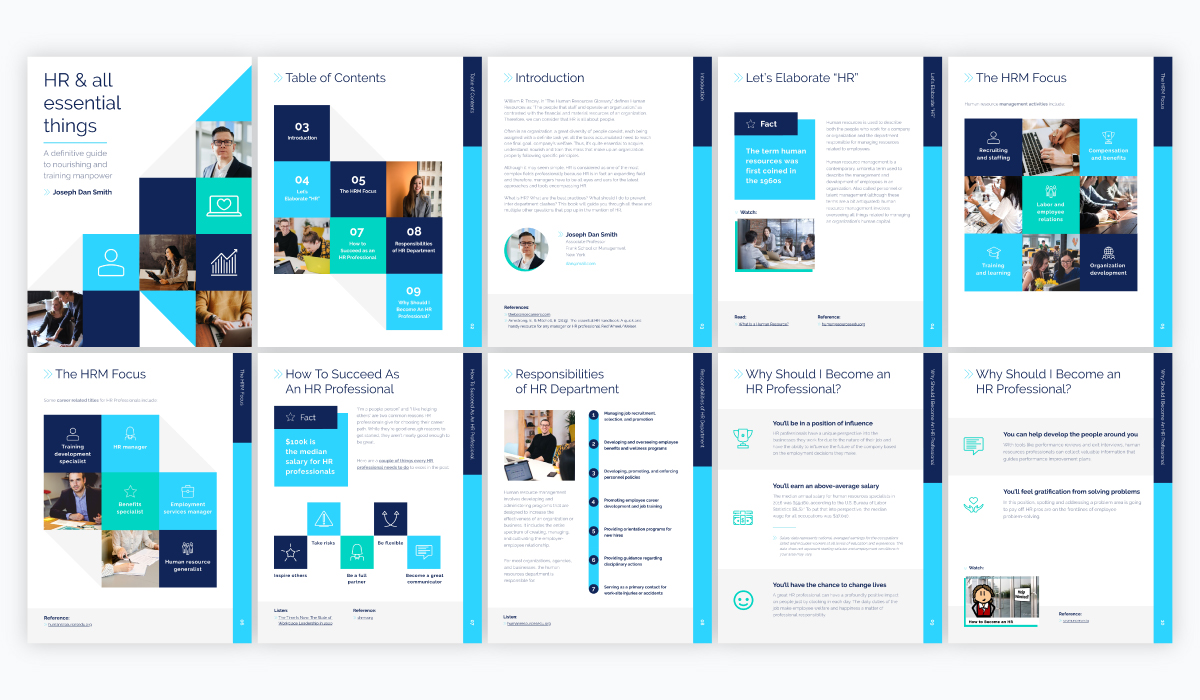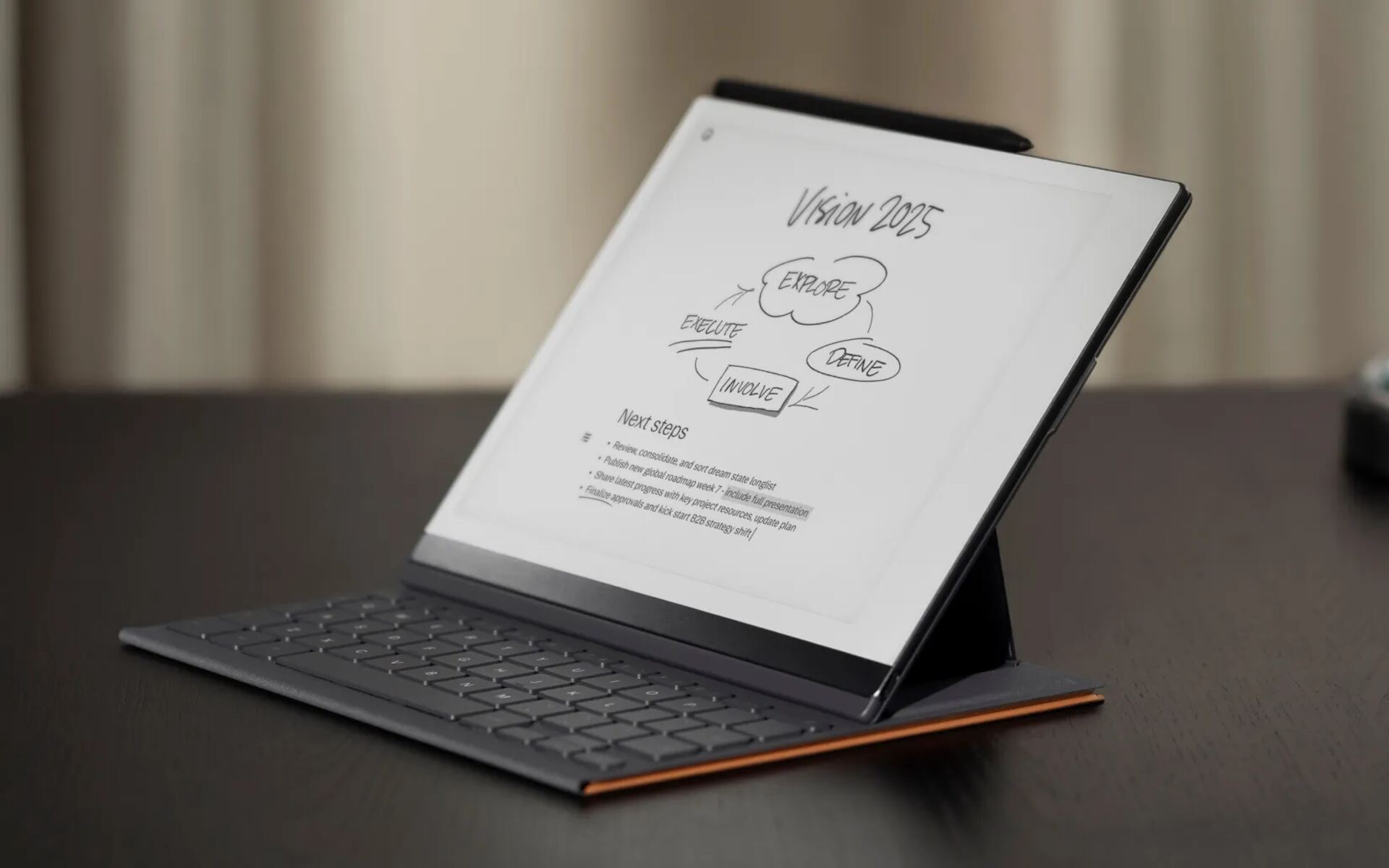Introduction
Welcome to the world of digital note-taking! In this age of technology, Evernote has become a popular choice for organizing and managing notes. Whether you’re a writer, student, or professional, Evernote offers a variety of features to streamline your note-taking process.
If you’re planning to write an eBook, organizing your notes effectively is crucial for a smooth writing experience. In this article, we will explore the steps to organizing your notes in an Evernote notebook for creating an eBook. By following these steps, you’ll be able to structure your thoughts, find information easily, and translate your ideas into a well-structured eBook.
Before we dive into the details, let’s talk about why Evernote is an ideal tool for this purpose. Evernote allows you to create and store notes in a digital format, making it easy to access your content from any device with an internet connection. Its rich text editing features, tagging system, and collaboration options make it a versatile platform for writers.
Now, let’s get started with the step-by-step process of organizing your notes in an Evernote notebook for your eBook project. By the end of this article, you’ll have all the knowledge you need to create a well-structured and organized eBook.
Step 1: Setting up your Evernote Notebook
The first step in organizing your notes for creating an eBook in Evernote is to set up a dedicated notebook for your project. Having a separate notebook ensures that all your eBook-related notes are kept in one place, making it easier to locate them later.
To create a new notebook in Evernote, simply click on the “New Notebook” button or navigate to the “Notebooks” section and click on the “Add Notebook” option. Give your notebook a descriptive name related to your eBook, such as “My eBook Project” or “Writing Journey”. This will help you identify it quickly among your other notebooks.
Once you’ve created your eBook notebook, take some time to set the default settings for your notebook. You can click on the “I” icon next to your notebook’s name to access the notebook settings. Here, you can customize the notebook’s color, add a cover image, and even set a specific reminder for it.
Additionally, consider enabling the option to sync your notebook across all your devices. This way, you can access your notes seamlessly, whether you’re working on your computer, tablet, or smartphone. Simply click on the “Sync” option in the notebook settings to enable this feature.
Another useful setting to consider is the option to share your notebook with collaborators. If you’re working with other writers, editors, or graphic designers on your eBook project, sharing the notebook allows for easy collaboration and real-time updates. You can set the sharing permissions in the notebook settings and invite others to contribute to your eBook.
Now that your Evernote eBook notebook is set up, you’re ready to move on to the next step: creating separate notes for each topic or chapter. This will ensure that your content is organized and easily accessible as you start to write your eBook.
Step 2: Creating separate Notes for each topic or chapter
Now that you have your dedicated Evernote eBook notebook set up, it’s time to start organizing your content by creating separate notes for each topic or chapter you plan to cover in your eBook.
This step is essential in breaking down your eBook into manageable sections, making it easier for you to focus on one topic at a time and keep track of your progress.
To create a new note in Evernote, click on the “New Note” button or press Ctrl+N (Windows) or Command+N (Mac) on your keyboard. Give your note a descriptive title that reflects the specific topic or chapter you’ll be addressing.
Now, you can start adding your content to the note. You can type directly into the note, copy and paste text from other sources, or even attach files such as PDFs, images, or audio recordings to provide additional context or references.
One great feature of Evernote is the ability to format your text using various styles. You can make use of bold and italic fonts to highlight key points or emphasize certain phrases. Additionally, you can create bulleted or numbered lists for better organization and readability.
When creating notes for each topic or chapter, it’s a good idea to include an outline or a brief summary of what you plan to cover. This will help you stay focused and ensure that you’re addressing all the necessary points in your eBook.
As you progress with your writing, you can create new notes for each additional topic or chapter. Evernote makes it easy to navigate between notes within a notebook, allowing you to switch between topics effortlessly.
By creating separate notes for each topic or chapter, you’ll have a well-structured and organized outline for your eBook. This will make it easier to reference specific information and maintain a coherent flow throughout your writing process.
Step 3: Using tags to categorize and organize your notes
In addition to creating separate notes for each topic or chapter, utilizing tags in Evernote can significantly enhance the organization and retrieval of your eBook notes.
Tags act as labels that you can assign to your notes, allowing you to categorize and group related content together. This makes it easier to search for specific information and create a cohesive structure for your eBook.
To add a tag to a note in Evernote, simply type the desired tag in the “Tags” field at the top of the note. You can use existing tags or create new ones by separating them with commas.
When choosing tags, think about the main themes or topics that your eBook covers. For example, if you’re writing a cookbook, you might want to use tags such as “recipes,” “cooking techniques,” or “ingredient substitutions.” By using tags that accurately reflect the content of each note, you’ll be able to easily locate related information later on.
One of the advantages of using tags is that they enable cross-referencing between different notes. For example, if you have a note about “healthy breakfast recipes” and another note about “easy meal prep ideas,” you can assign both notes with the tag “meal planning.” This way, you can easily find all the relevant notes by searching for the “meal planning” tag.
Tags also come in handy when you’re looking for specific information within your eBook. Evernote’s powerful search feature allows you to search for notes with specific tags, making it convenient to gather all the relevant content related to a particular topic or theme.
Additionally, tags can be used to mark the status or progress of your notes. For example, you can create tags like “to-do,” “in-progress,” or “completed” to keep track of your writing tasks. This way, you can quickly identify which notes require further attention or revision.
Remember, the key to using tags effectively is consistency and thoughtful organization. Take some time to plan out your tag structure and ensure that you’re using them consistently across all your notes. This will ultimately save you time and effort in navigating and refining your eBook content.
Step 4: Using note links for cross-referencing
As you continue to gather and organize your notes for your eBook, you may find the need to cross-reference information between different sections or chapters. Evernote provides a powerful feature called note links that allows you to easily create connections and references within your notes.
Note links enable you to create clickable links that direct you to other notes within your Evernote eBook notebook. This can be especially useful when you want to refer back to a specific topic, provide additional context, or create a seamless flow between different sections of your eBook.
To create a note link in Evernote, simply select the text or image that you want to turn into a link and then click the “Link” button in the formatting toolbar. In the pop-up window, select the note you want to link to from the drop-down list or search for it using keywords. Once you’ve selected the note, click “OK” to create the note link.
Note links can be used in various ways to enhance the organization and readability of your eBook. Here are a few examples:
- Create a table of contents: You can create a dedicated note that serves as a table of contents for your eBook. Within this note, you can include links to each chapter or section, allowing readers to navigate through your eBook easily.
- Cross-reference related information: If you mention a concept or topic in one chapter that is further explained in another chapter, you can create a note link to direct readers to the relevant information. This helps maintain a cohesive flow and prevents repetition.
- Provide additional resources: If you want to supplement your eBook with external resources or references, you can create note links to online articles, research papers, or related notes within Evernote. This allows your readers to explore additional information without interrupting the reading experience.
By using note links strategically, you can create a well-connected network of information within your eBook. This not only enhances the reader’s understanding but also encourages further exploration and engagement with the content you’ve created.
Step 5: Utilizing notebooks within your primary Evernote Notebook
While you have already created a dedicated Evernote notebook for your eBook project, you can further enhance your organization by utilizing additional notebooks within your primary notebook.
Notebooks within Evernote are like folders that can help you group related content together. By creating separate notebooks within your primary eBook notebook, you can organize your notes based on specific themes, topics, or sections of your eBook.
To create a new notebook within your primary Evernote eBook notebook, simply click on the “New Notebook” button or navigate to the “Notebooks” section and click on the “Add Notebook” option again. Give your new notebook a descriptive name that reflects the content it will contain.
For example, if you’re writing a health and wellness eBook, you might create separate notebooks for topics such as nutrition, fitness, mental health, and recipes. This way, you can keep your notes focused and easily locate specific information when you need it.
Within each notebook, you can apply the same organizational techniques we’ve discussed: creating separate notes, using tags, and incorporating note links. By combining these strategies with the use of notebooks, you can establish a hierarchical structure that allows for easy navigation and retrieval of your eBook content.
One advantage of utilizing notebooks is the ability to set specific sharing permissions for each notebook. This can be particularly useful if you’re collaborating with others on your eBook project. You can grant access to specific notebooks based on the collaborators’ roles and areas of expertise.
Additionally, notebooks can help you maintain a clean and clutter-free workspace within Evernote. As your eBook project progresses, you may accumulate a large number of notes. By organizing them into separate notebooks, you can keep your workspace tidy and focused on specific aspects of your eBook.
Remember to review and reassess your notebooks regularly as you continue with your eBook project. You may find that certain sections have evolved or that new topics need to be added. Flexibility is key to ensuring that your notebooks continue to serve your organization and help you stay on track.
Step 6: Adding annotations and comments to your notes
As you work on organizing your notes for your eBook in Evernote, it’s important to utilize the annotation and comment features to enhance collaboration and provide additional context to your content.
Annotating your notes can be incredibly helpful, especially when you need to highlight specific points, provide explanations, or make revisions to your written content. Evernote offers a range of annotation tools, such as highlighting, underlining, and adding textual comments.
To annotate your notes in Evernote, simply select the text or content you wish to annotate and choose the appropriate annotation tool from the formatting toolbar. You can highlight important sections, underline key phrases, or add comments to provide clarity.
Annotations can serve multiple purposes for your eBook project:
- Clarify your thoughts: As you review your notes, you may come across sections that require further explanation or clarification. By adding annotations, you can provide yourself with additional context or insights when you revisit your notes later on.
- Collaborate with others: If you’re working on your eBook project with a team, annotations can facilitate collaboration. By leaving comments or annotations, you can communicate ideas, address questions, or suggest revisions to your team members. This creates a seamless and efficient workflow.
- Document changes and updates: As you make revisions or updates to your eBook content, adding annotations allows you to track and document those changes. This is particularly useful during the editing and proofreading phase, ensuring that all modifications are captured and accounted for.
In addition to annotations, Evernote also allows you to leave comments on specific parts of your notes. This feature is ideal for conversations or discussions within the context of your eBook content.
To leave a comment in Evernote, select the specific text or content and click on the “Add Comment” option from the toolbar. A comment box will appear, where you can enter your comment or feedback. This promotes collaboration and encourages constructive discussions with your team or editors.
By leveraging the annotation and comment features in Evernote, you can fully utilize the platform’s capabilities to enhance your eBook organization and collaboration process. It allows for clear communication and contextual information, making your notes more robust and valuable.
Step 7: Including images and other media in your notes
When it comes to creating an eBook, visuals are just as important as the written content. Evernote provides the option to include images and other media in your notes, allowing you to enhance the visual appeal and overall quality of your eBook.
Adding images to your notes can serve various purposes:
- Illustrate concepts: Images can help you explain complex ideas or concepts more effectively. Whether it’s a diagram, a chart, or an infographic, visual representations can make your eBook content more engaging and easier to understand.
- Show examples: If you’re providing practical examples or case studies in your eBook, including images can help illustrate the point you’re making. Visual examples can provide a deeper level of comprehension and resonate with your readers.
- Create a visual style: By incorporating images related to your eBook’s theme or subject matter, you can establish a consistent visual style throughout your eBook. This helps create a cohesive and professional look and feel.
To add images to your Evernote notes, simply click on the “Attach” button in the formatting toolbar and select the image file from your computer. You can also copy and paste images directly into the note or take a photo using the Evernote mobile app.
In addition to images, you can also include other media types such as audio and video to further enhance your eBook content. For example, you could embed a video tutorial, an interview recording, or a podcast episode directly into your note.
Including different forms of media not only adds variety and interest to your eBook but also caters to different learning preferences of your readers. Some individuals prefer visual content, while others may learn better through auditory means.
When adding images or other media to your notes, ensure that they are relevant and complement your written content. Avoid overloading your eBook with unnecessary visuals that may distract or confuse the reader. Each image or media element should serve a purpose and contribute to the overall message of your eBook.
By incorporating images and other media within your Evernote notes, you can create a visually appealing eBook that captures the attention of your readers and enhances their understanding and engagement with your content.
Step 8: Formatting and styling your notes for readability
As you continue to work on your eBook in Evernote, it’s important to pay attention to the formatting and styling of your notes. Well-formatted and visually appealing content improves readability, captures readers’ attention, and enhances the overall quality of your eBook.
Here are some tips on how to format and style your notes effectively:
- Use headings and subheadings: Break your content into logical sections using headings and subheadings. This not only organizes your thoughts but also helps readers navigate through your eBook more easily. Utilize the available heading styles in Evernote’s formatting toolbar to create a hierarchy of headings.
- Make use of bullet points and numbered lists: When presenting information in a list format, use bullet points or numbered lists. This makes the content more scannable and manageable for readers. Consider using bullet points for providing examples or listing key points, and numbered lists for step-by-step instructions or sequential information.
- Emphasize important information: Use formatting features such as bold or italic fonts to highlight important keywords or phrases. This draws attention to key concepts and makes them stand out within the text.
- Create whitespace: Break up long paragraphs and dense blocks of text by adding whitespace. This improves the readability of your eBook and prevents readers from feeling overwhelmed. Shorter paragraphs and sufficient spacing between lines make the content easier to digest.
- Choose an appropriate font and font size: Select a font that is easy to read, such as a sans-serif font like Arial or Helvetica. Additionally, ensure that your font size is comfortable for readers, typically between 10 and 12 points. Clear and legible text enhances the reading experience.
- Consider using visual elements: In addition to images, you can use other visual elements, such as tables or callout boxes, to provide additional information or emphasize important details. Visual elements break up the text and add visual interest to your eBook.
While formatting and styling your notes, keep in mind that consistency is key. Establishing a consistent formatting style throughout your eBook creates a professional and cohesive look. For instance, maintain consistent font styles, colors, and spacing to ensure a visually unified eBook.
Before finalizing your eBook, preview your notes in different formats or different devices to ensure that they appear as intended. Pay attention to any formatting inconsistencies or layout issues and make adjustments as needed.
By taking the time to format and style your notes for readability, you’ll create an eBook that is visually pleasing, easy to navigate, and enjoyable for your readers.
Step 9: Collaborating with others on your eBook project
If you’re working on your eBook project with a team, Evernote offers powerful collaboration features that facilitate seamless teamwork and allow for efficient sharing of ideas and content.
Collaboration within Evernote involves multiple contributors working together on the same project, sharing notes, and exchanging feedback. This step is especially relevant if you’re co-authoring your eBook, working with editors, or seeking input from subject matter experts.
Here are some ways you can collaborate with others on your eBook project using Evernote:
- Share your notebook: Evernote allows you to share your eBook notebook, granting access to specific individuals or teams. You can set permissions to control whether others have view-only access, editing access, or the ability to share the notebook further.
- Invite collaborators: If you’re working with others who are not already part of your Evernote network, you can invite them to collaborate on your eBook project. Simply send an invitation via email and specify the level of access they should have to your notebook.
- Leave comments and annotations: Collaboration involves providing feedback and suggestions. You and your collaborators can leave comments and annotations on specific parts of the notes, initiating discussions and indicating areas that require attention or improvement.
- Assign tasks and deadlines: Evernote allows you to assign tasks to specific individuals, set deadlines, and track progress. This feature helps streamline the workflow, keeping everyone accountable and enabling an organized approach to completing the eBook.
- Sync changes in real time: Evernote syncs changes in real time, ensuring that all collaborators have access to the most up-to-date version of your notes. This eliminates version control issues and enhances the collaborative experience.
Communication is key in any collaboration, and Evernote provides various ways to facilitate communication within your eBook project. You can use the chat feature to have real-time conversations, use the built-in chat functionality to address questions or clarify doubts, and even tag collaborators in comments to draw their attention to specific aspects.
Remember to establish clear roles and responsibilities within your team to ensure a smooth and efficient collaboration process. Clearly define who is responsible for writing, editing, proofreading, designing, or any other tasks related to your eBook project.
By leveraging the collaboration features in Evernote, you can harness the collective expertise and input of your team members, leading to a more comprehensive and refined final product.
Step 10: Using Evernote search and filtering options for easy access to your notes
As your eBook project progresses and your notes accumulate in Evernote, it becomes crucial to have efficient and effective ways of searching and accessing your notes. Evernote provides robust search and filtering options that make it easy to locate specific information and streamline your workflow.
Here are some tips for utilizing Evernote’s search and filtering options:
- Use keywords: When searching for specific notes or information within your eBook, make use of keywords that are relevant to your search. Evernote’s search function searches both note content and titles, ensuring that you quickly find what you’re looking for.
- Refine your search: Evernote offers advanced search operators that allow you to refine your search further. You can use operators such as “AND,” “OR,” and “NOT” to narrow down your search results based on specific criteria.
- Search within specific notebooks or tags: If you want to search within a particular notebook or tag, use Evernote’s notebook and tag search options. This helps to limit the scope of your search and retrieve information that is specific to your eBook project.
- Filter your notes: Evernote allows you to filter your notes based on various criteria, such as date created, date updated, or note size. Filtering options help you organize and prioritize your notes, making it easier to locate the most recent or relevant content.
- Save search queries: Evernote’s saved searches feature allows you to save frequently used search queries, enabling quick access to specific sets of notes. This is particularly useful when you want to revisit certain topics or themes within your eBook.
- Utilize Evernote Context: Evernote Context provides you with related content, such as notes, articles, or information from other sources, based on the context of the note you’re currently viewing. This additional information can inspire ideas, provide supporting material, or enhance your research process.
By mastering these search and filtering options, you can easily retrieve and access the relevant notes and information you need for your eBook project. This saves you time and enables a more efficient workflow, ensuring that you stay focused on writing and producing quality content.
Remember to regularly review and organize your notes for optimal search effectiveness. Tagging your notes consistently, keeping your titles descriptive, and utilizing the search and filtering options will help maintain a well-organized and easily searchable Evernote workspace.
With Evernote’s robust search capabilities at your disposal, you can spend less time searching for information and more time creating and refining your eBook.
Conclusion
Organizing your notes in Evernote for creating an eBook is a crucial step in ensuring a structured and efficient writing process. By following the steps outlined in this article, you can streamline your note-taking process and optimize your workflow.
We started by setting up a dedicated Evernote notebook for your eBook project, allowing you to keep all your notes in one centralized location. Then, we discussed the importance of creating separate notes for each topic or chapter, enabling you to focus on specific areas of your eBook.
Utilizing tags in Evernote helped you categorize and organize your notes, making it easier to find relevant information quickly. Note links were introduced as a useful way to cross-reference related content and maintain a seamless flow throughout your eBook.
We explored the benefits of utilizing additional notebooks within your primary Evernote notebook, allowing for further organization and categorization of your eBook content. Adding annotations and comments to your notes enhanced collaboration and provided additional context or suggestions.
Furthermore, incorporating images and other media elements into your notes can elevate the visual appeal and engagement of your eBook. Properly formatting and styling your notes improves readability and helps guide your readers through the content effectively.
Collaborating with others on your eBook project becomes effortless with Evernote’s collaboration features, enabling real-time communication, task management, and shared access to your notes.
Lastly, Evernote’s powerful search and filtering options ensure easy access to your notes, allowing you to quickly find specific information and streamline your writing process.
By implementing these steps and utilizing Evernote’s features effectively, you can stay organized, maximize productivity, and create a well-structured eBook that captivates your readers.
Now, armed with the knowledge and strategies outlined in this article, it’s time to put your Evernote skills to work and start creating your brilliant eBook!

























